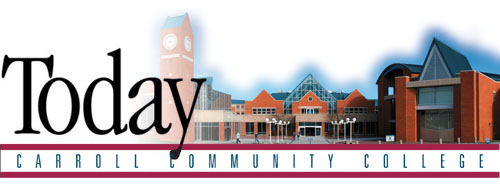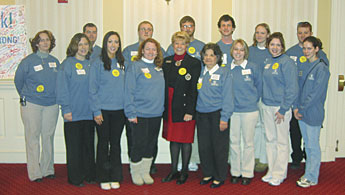
| Spring 2005, No. 19 |
|
ContentsCarroll is Fastest-growing Community College in Maryland over Past Five Years Dr. Pappalardo Named One of Maryland’s Top 100 Women Carroll Installs Life-Saving Devices throughout Campus Spring Enrollment at Record High Recent Institutional Research Reports College to Host Open House Tuesday May 3rd Student Profile: Michelle Shrader
|
| Carroll is Fastest-growing Community College in Maryland over Past Five Years | ||||||||||||||||||||||||||||||||||||||||||||||||||||||||||||||||||||||||
|
Full-time-equivalent (FTE) enrollment at Carroll Community College grew 44 percent over the FY1999-FY2004 period. FTE growth among all sixteen Maryland community colleges was less than 18 percent over the same period. Carroll’s FTE enrollment grew 2.5 times as fast as community colleges statewide. Carroll had the greatest rate of FTE growth among Maryland community colleges. Wor-Wic Community College was a close second, growing 43 percent. Only three other colleges had FTE growth above 30 percent: Baltimore City (35 percent), Howard (31), and Cecil (31). Full-time-equivalent is a measure of enrollment that allows the inclusion of credit and noncredit enrollment, aggregated across all terms in a year. Total FTE enrollment is a comprehensive measure of the total instructional activity occurring at a college. FTEs are used in the state funding formula for community colleges for these reasons. Full-time-equivalents convert part-time student attendance into its equivalent in full-time students. There are a number of different formulas for calculating FTEs. The basic concept starts from the idea that a full-time credit student would enroll in ten courses during a year. Assuming the typical three credits per course, this equates to 30 credits annually. So one formula for calculating FTE is to take total credit hours and divide by 30. A three-credit course traditionally met for three hours a week for 15 weeks, for a total of 45 hours. Ten three-credit courses would meet a total of 450 hours. So another way of looking at an FTE is to equate it to 450 hours of instructional time. This is how an FTE is calculated for noncredit courses. Why has Carroll Community College had the greatest rate of growth in full-time-equivalent enrollment among Maryland’s 16 community colleges the past five years? Qualitative focus group and quantitative research data suggest the following factors have contributed to this growth:
Congratulations to all who have contributed to this success! Percent Growth in FTE Enrollment, FY1999-FY2004
Carroll was well represented at Community College Advocacy Day in Annapolis. Pictured in the front row: Cheryl Turco, Melissa Stickles, Dawn White, Jennifer Eikenberg, Dr. Pappalardo, Louise Margio, Michelle Shrader, Jeana Biondo, and Jennifer Judge. Back row: Robert DeBaufre, Eli Geise, PJ Ward-Brown, Steve Barnett, Vanessa Shaw, and Scott Fairley. |
||||||||||||||||||||||||||||||||||||||||||||||||||||||||||||||||||||||||
